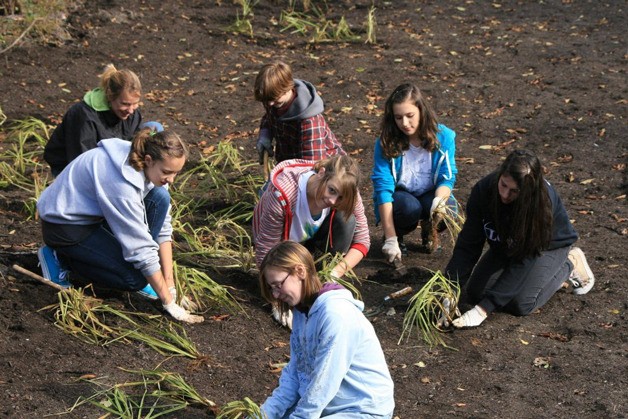Submitted by San Juan County.
After 17 years, the Eastsound constructed wetland is complete.
The county purchased the 0.9-acre “Mount Property” next to the Village Green in 1994 to create a facility to treat surface water runoff. During the next 12 years, a number of studies were completed to evaluate stormwater treatment options best suited for the site. The final concept was designed into a three phased project.
A grant from the Environmental Protection Agency funded the construction of phase one in 2010. That phase included the installation of pipe from the treatment facility to Fishing Bay.
Phase two was just completed with the installation of the constructed wetland treatment facility. The final phase of the project, planned for 2012, will include piping to convey stormwater runoff from A Street, and part of the Prune Alley and North Beach Road drainages, into the constructed wetland.
Stormwater runoff is one of the largest sources of pollution entering Puget Sound and the Salish Sea. The constructed wetland facility will treat a portion of Eastsound’s stormwater road runoff before it reaches the water.
The facility consists of a sedimentation basin and a constructed wetland with the capacity to treat 370,000 gallons of stormwater at one time. The small existing wetland located at the western edge of the site was incorporated into the facility. By slowing the flows, the sedimentation basin allows pollutants and particles to settle out of the stormwater. It then enters the wetland and meanders through vegetation and soil to be further treated by a variety of plants providing a range of capacities for toxin and nutrient uptake, and by infiltration through the soil. The treated stormwater is discharged into the existing downstream piping system.
A kiosk with information on the constructed wetland will be installed prior to the spring.
The wetland is expected to be fully functional by the fall of 2012 and winter of 2013.



